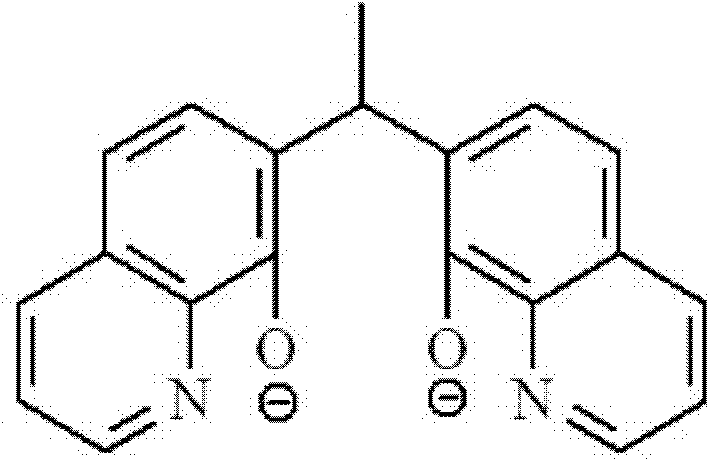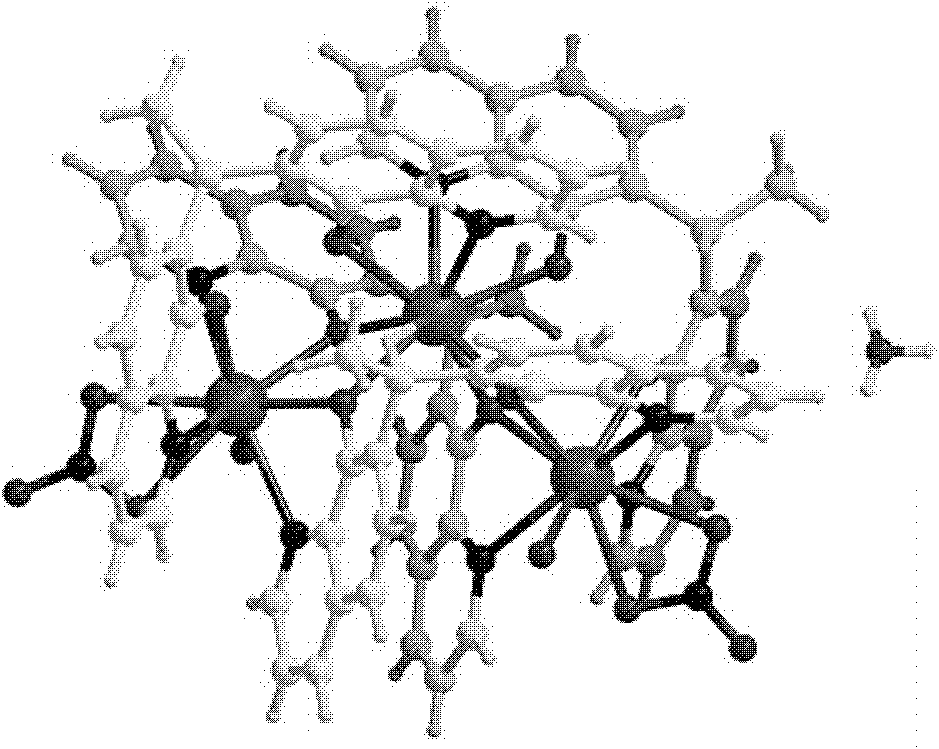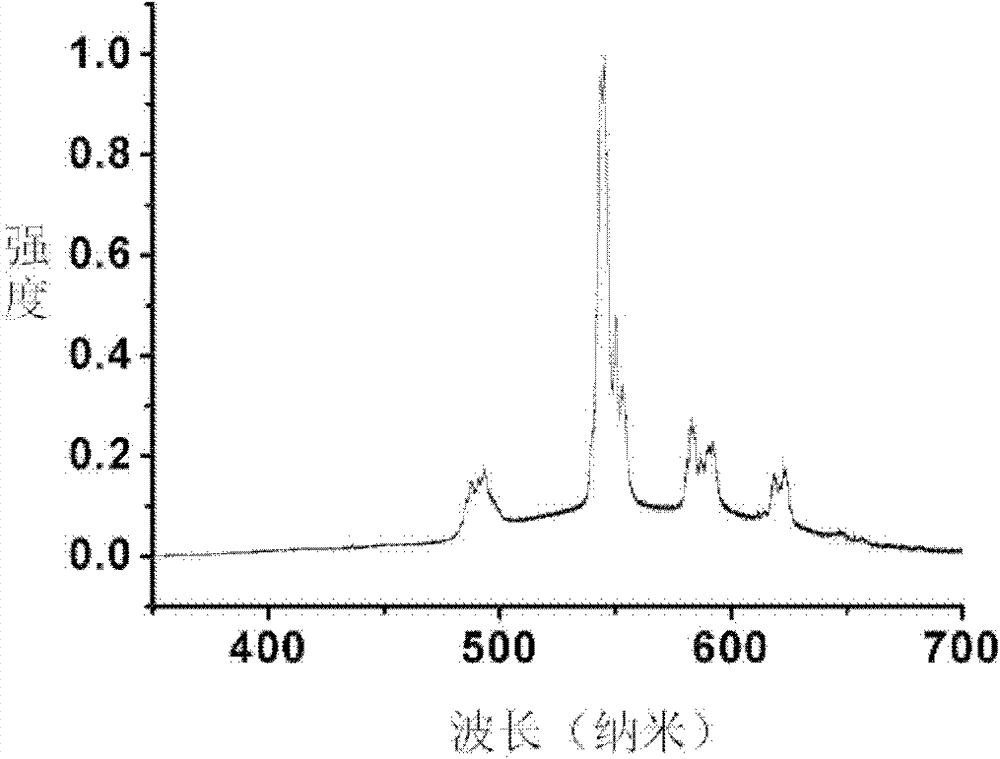In situ ligand generated and ligand crystallized lanthanide complex and its preparation method
A technology of in-situ ligands and complexes, which is used in compounds containing Group 3/13 elements of the periodic table, chemical instruments and methods, luminescent materials, etc., to achieve good fluorescence performance and magnetic function, and the effect of simple and easy synthesis
- Summary
- Abstract
- Description
- Claims
- Application Information
AI Technical Summary
Problems solved by technology
Method used
Image
Examples
Embodiment 1
[0018] A method for preparing the lanthanide complex formed by the in-situ ligand and coordinated crystallization, the steps are as follows:
[0019] 1) Dissolve 1mmol of 8-hydroxyquinoline, 2mmol of terbium nitrate and 1mmol of sodium azide in 10ml of ethanol solvent, stir for 10 minutes and seal in a hydrothermal axe;
[0020] 2) Insulate at 120°C for two days, then cool down to room temperature at a rate of 5°C per hour, and the obtained blocky crystal is the target object.
[0021] Characterization of the lanthanide complex:
[0022] 1) Determination of crystal structure
[0023] Select a single crystal with a suitable size under a microscope, and use Mo-Kα rays (λ=0.71073 ),by to collect diffraction data. All diffraction data were corrected for absorption using the SADABS program]. The unit cell parameters were determined using the least squares method. Data restoration and structure elucidation were done using the SAINT and SHELXTL programs, respectively. Partia...
Embodiment 2
[0032] A method for preparing the lanthanide complex formed by the in-situ ligand and coordinated crystallization, the steps are as follows:
[0033] 1) Dissolve 1mmol of 8-hydroxyquinoline, 1.5mmol of gadolinium nitrate and 2mmol of sodium azide in 10ml of ethanol solvent, stir for 15 minutes and seal in a water heat axe;
[0034] 2) Insulate at 130°C for two days, then cool down to room temperature at a rate of 5°C per hour, and the obtained blocky crystal is the target object.
[0035] Characterization of the lanthanide complex:
[0036] 1) Determination of crystal structure:
[0037] The lanthanide complex and the lanthanide complex prepared in Example 1 are isomorphic compounds.
[0038] 2) Magnetic performance test:
[0039] The magnetic test of the lanthanide complex was completed with the Quantum Design MPMS XL-7SQUID device. The test showed that there is a weak magnetic interaction between the rare earth ions in the lanthanide complex, which has a magnetic refriger...
Embodiment 3
[0041] A method for preparing the lanthanide complex formed by the in-situ ligand and coordinated crystallization, the steps are as follows:
[0042] 1) Dissolve 1mmol of 8-hydroxyquinoline, 2mmol of ytterbium nitrate and 2mmol of sodium azide in 10ml of ethanol solvent, stir for 20 minutes and seal in a hydrothermal axe;
[0043] 2) Insulate at 140°C for two days, then cool down to room temperature at a rate of 5°C per hour, and the obtained blocky crystal is the target object.
[0044] The lanthanide complex and the lanthanide complex prepared in Example 1 are isomorphic compounds.
PUM
 Login to View More
Login to View More Abstract
Description
Claims
Application Information
 Login to View More
Login to View More - R&D
- Intellectual Property
- Life Sciences
- Materials
- Tech Scout
- Unparalleled Data Quality
- Higher Quality Content
- 60% Fewer Hallucinations
Browse by: Latest US Patents, China's latest patents, Technical Efficacy Thesaurus, Application Domain, Technology Topic, Popular Technical Reports.
© 2025 PatSnap. All rights reserved.Legal|Privacy policy|Modern Slavery Act Transparency Statement|Sitemap|About US| Contact US: help@patsnap.com



